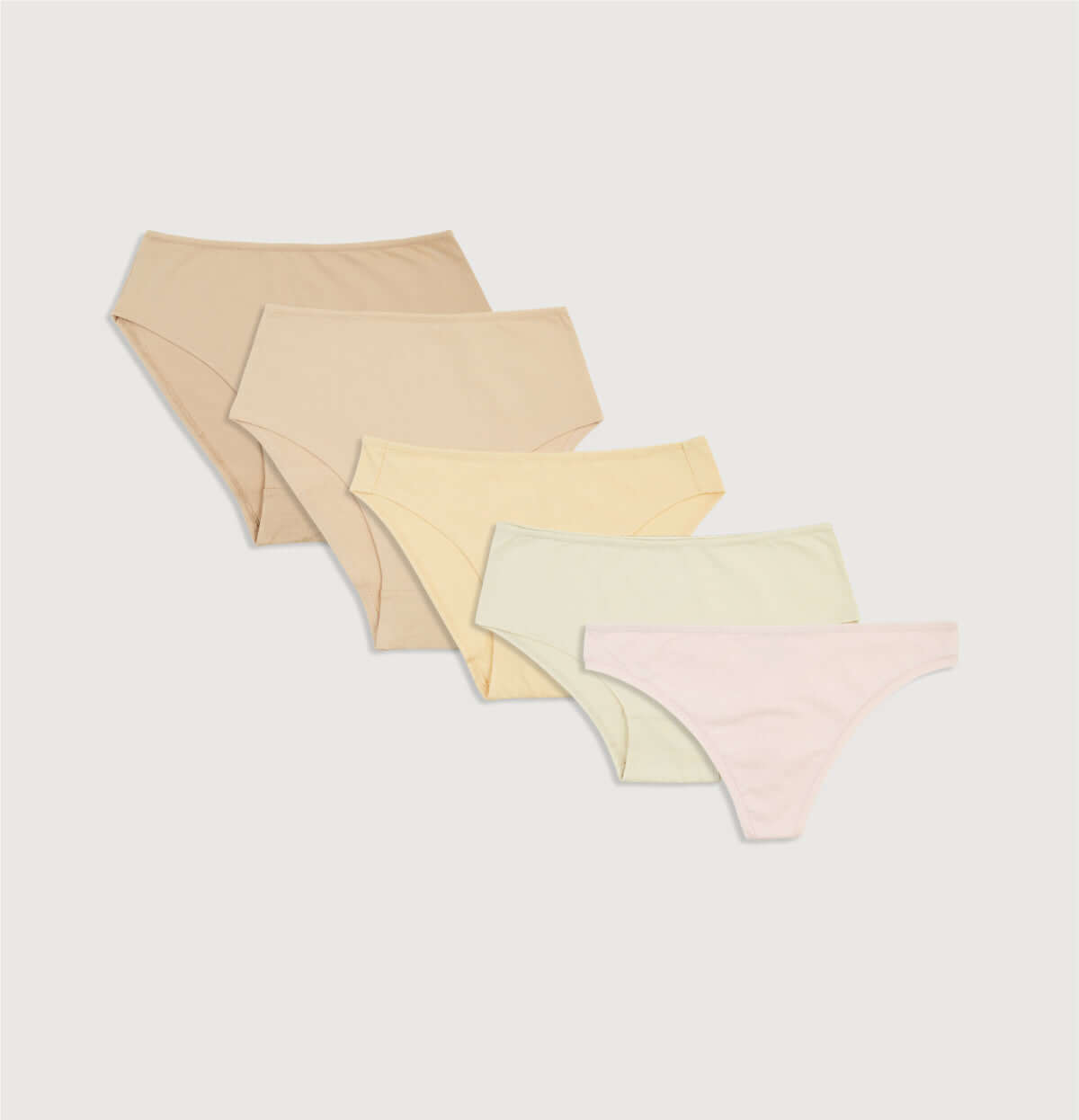The amount of waste from disposable hygiene products
Disposable feminine hygiene products, such as tampons and pads, are a significant source of non-biodegradable plastic waste. The average woman uses about 10,000 disposable hygiene products in her lifetime. Most of these products end up in landfills, where they can take 500-800 years to decompose.
Additionally, the production of disposable products requires significant amounts of resources, including water, energy, and chemicals. The plastic used in packaging and the products themselves contributes to greenhouse gas emissions and exacerbates the climate crisis.
How do menstrual underwear offer a greener solution?
Long-lasting reuse: Period panties are a reusable product that is designed to be reused for years. Instead of throwing away pads or tampons after a single use, period panties can be washed and reused for up to two years .
Less plastic and fewer chemicals: Unlike disposable pads that contain plastic layers and synthetic chemicals, menstrual underwear is usually made from eco-friendly natural or synthetic fabrics.
Resource savings: The production of menstrual underwear requires fewer resources than the amount of disposable products required for the same period. Studies show that menstrual underwear has a lower environmental impact throughout its entire life cycle.
Data and studies on environmental impact
Research shows that using reusable products like menstrual pads can significantly reduce waste. In the European Union alone, 49 billion single-use products are consumed each year.
Economic and environmental impact on the consumer
Long-term cost: Although menstrual underwear may seem more expensive initially, it pays off much more in the long run. Period underwear can be three times cheaper than a year's supply of disposable pads .
Personal waste savings: Using a reusable product directly reduces the amount of household waste. Many women report a sense of satisfaction that they are contributing to reducing their ecological footprint.
Barriers and challenges in the transition to reusable products
Education and awareness: One of the key barriers to widespread adoption of menstrual underwear is a lack of information. Education and awareness programs can help present the product as a sustainable and accessible solution.
Accessibility and initial cost: Initial cost can be a barrier for low-income women. Initiatives to subsidize reusable products can help bridge this gap.
Laundry: In countries or areas with limited access to water or electricity, using reusable products can be challenging.
Looking to the future: How to improve sustainability?
Developing new technologies: Using fully biodegradable materials or smart materials that help monitor the menstrual cycle can improve the effectiveness and sustainability of menstrual underwear.
Making products accessible worldwide: Manufacturers and non-profit organizations can work together to make menstrual underwear accessible to disadvantaged populations around the world .
Integration into education systems: Implementing environmental education that includes information about reusable products can encourage young men and women to choose sustainable solutions from a young age.
Summary
Menstrual pads are more than just a hygiene product; they are a tool for personal, social and environmental change. Choosing them reduces waste, saves resources and contributes to a more open and healthy discourse about menstruation. Despite the challenges, the trend is clear: more women are adopting reusable products as a responsible and ecological choice.With increasing awareness and technological advancements, menstrual underwear is set to play a key role in combating the climate crisis and promoting sustainability. Every personal choice is an important step towards a cleaner, healthier world.






